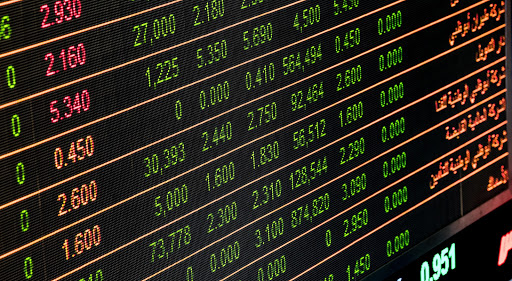What Smart Investors Do in Volatile Markets
What Smart Investors Do
in Volatile Markets
2020
has been one of the most volatile years that the stock market has ever
experienced. Just to recap the past few months: we hit all-time highs in
February before the Coronavirus outbreak in the US and Canada. Then when the
Coronavirus hit us, the markets dropped over 34%.
Since
the end of March to early June, the stock market has mounted an incredible
rally and even recorded the best 50-day stretch ever before it began slumping
once again these past few weeks. Like most of you, I have been watching the
news and pandemic updates to see its effect on the stock market. All of this
news and fear created a whiplash response in the markets that nobody could
expect with rapid increases and decreases in entire sectors occurring moments
after each other. As nobody knows what the future holds and what could happen
next, the question everyone is asking is what can I do to reduce this volatility
in my portfolio?
It
has been said time and time again that the smartest investors are the ones who
forget about their investing accounts and do not check the day to day changes
in their holdings. These are the words I try to follow but it is easier said
than done. This is because most experts believe that the best thing you can do
is to tune out all the news and the negativity of the world – especially if you
are younger and are not planning to retire any time soon as you have time to
weather the ups and downs of the stock market so that you can come out on top.
This is because the smart investor sticks with a buy-and-hold strategy. This
means that they purchase a stock / ETF / Mutual Fund for a time horizon
exceeding 5 years so that the holding has time to appreciate (stock price
increases) and over time will be worth more than what you has originally paid.
This
is because not paying attention and keeping your holdings over the long-term is
the best thing to do as you can alleviate your stress and anxiety of the
short-term fluctuations of the market. As an example, let’s say you have 100 shares
of $1 in Company A. Your total portfolio is worth $100 on January 1st.
However, what happens if on January 2nd the company is unable to
produce their goods as their employees have decided to go on strike due to
being underpaid. This halt in production scares investors into selling their
positions quickly so as not to lose too much money from their investments. The
stock price drops from $1 to $0.40. On paper, you have just lost 60% of your
portfolio – dropping from $100 to $40 – in a single day. For the investors who
check their portfolio every day, chances are you would probably sell out of
fear of it dropping even more and losing even more money. You would than take
that 60% loss and move onto the next stock hoping to make your money back
quickly or you might even decide to get out of the stock market completely as
you simply do not have the risk tolerance for such a steep drop to potentially
occur again. On the other hand, the smart investor, who does not pay attention
daily, misses this negative occurrence and holds until December 31st
– approximately 1 year – which gives the company enough time to deal with the
ongoing strikes, to make a mutually-beneficial agreement. This agreements leads
to their employees being more motivated to work hard since they are being paid
their worth that increases their productivity. So the stock goes from $0.40 to
$1.40 due to this increase in productivity (minus the additional cost of
salaries paid to the employees of course), and the smart investor ends the year
with a total portfolio worth of $140 and an increase of 40% on his original
investment of $100. Now this might seem like a basic example but if you imagine
this type of situation over multiple publicly traded companies and over a time
horizon of 5+ years, you can easily tell that some companies might have bad
days or months and that you should not let the fear of bad news dictate how you
decide to invest your hard earned money.
For
those who are struggling with their investments, particularly during these
times of high volatility, I would recommend that you calculate your Market Exposure.
Market Exposure = (Total Exposure to Equities * 50%) + Total Exposure to Bonds.
This number, converted into dollars, would let you know how much of your
investment portfolio were to be reduced if you lost 50% of your value. Please
note that this is specific to equities rather than bonds as bonds do not
decrease as drastically as equities – stocks, ETFs and Mutual Funds over a
short period of time.
As
an example, if you currently have an 80/20 percent split of equities and bonds
in your investment portfolio worth $100,000, this would mean that you have
$80,000 in equities and $20,000 in bonds. So your number would be ($80,000 *
0.5) + $20,000 = $60,000. So if the stock market crashes and you lose 50% of
all of your equities, you would be left with approximately $60,000 in your
portfolio instead of your original $100,000. Although this is a rough estimate,
just knowing what that number is in your head can be very beneficial, as you
know what the worst-case scenario could potentially be for your portfolio. This
helps you rest easy and not worry if the market drops a bit every now and then
and this also helps you to shake off any mild market drops and helps reassure
you. Determining your number can also help gauge your risk tolerance and help
you determine what portfolio allocation works for you. Usually, when you are
young, you tend to push for a 90/10 split with a concentration of equities. If
you are close to retirement, you might switch that to a 50/50 split with equal
parts in equities and bonds so that you have less to worry about in your
retirement years if the market remains rocky and volatile.
At
the end of the day, your worst enemy is yourself. As long as you remember that
drops are part of the stock market cycle and you do not begin selling at a
loss, you will definitely retire having made more money in the stock market
than you would have if you had kept that money hidden underneath your mattress.
Comments
Have any other ideas? Want to know more? Let me know down in the comments below!




Comments
Post a Comment